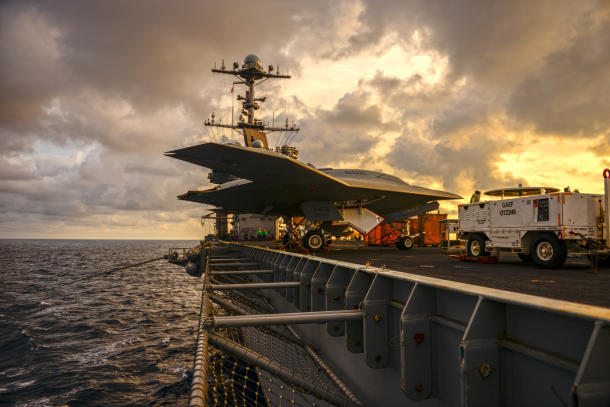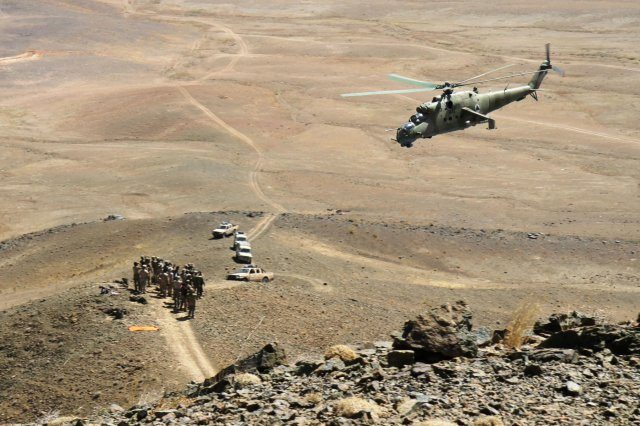The X-47B Unmanned Combat Air System Demonstrator (UCAS-D) conducted flight operations aboard the aircraft carrier USS Theodore Roosevelt (CVN 71), Nov. 10.
The event, the most-recent in a series of carrier-based tests, demonstrated the integration of the latest in naval aviation technology with the most advanced and capable carrier.
This weekend’s tests demonstrated the X-47B’s ability to integrate with the carrier environment. The aircraft performed precise touch and go maneuvers on the ship to generate data that characterizes the environment in close proximity of the carrier flight deck. In addition, the aircraft took part in flight deck handling drills, completed arrested landings and catapult launches. Mission operators monitored the aircraft’s autonomous flight from a portable command and control unit from Theodore Roosevelt’s flight deck during each of its 45-minute flights.
“It is a tremendous opportunity for the ‘Big Stick’ to be a part of the development and testing of the future of Naval Aviation,” said Capt. Daniel Grieco, Theodore Roosevelt’s commanding officer. The UCAS is an impressive system that gives us all a glimpse into the support and strike capabilities we can expect to join the fleet in the years to come. The tactical and support possibilities for such platforms are endless, and I know the crew of TR are proud to be able to be a part of that development.”
A major objective for the UCAS-D program is to demonstrate a digitized carrier controlled environment to allow for robust communications between the aircraft and all carrier personnel involved with launching, recovering and controlling the aircraft. A digitized carrier environment will ultimately increase flexibility and improve safety.
“This weekend’s resumption of carrier-based flights for the X-47 continues our efforts to mature critical unmanned enabling technologies and reduce the technical risk for the follow-on Unmanned Carrier Launched Airborne Surveillance and Strike (UCLASS) system,” said Capt. Beau Duarte, the Program Manager for Unmanned Carrier Aviation.
Current and future test events will continue to mature unmanned technologies and refine concept of operations to further inform unmanned carrier requirements. These program successes represent significant advancements in naval aviation technology and provide a glimpse into the future integration of manned and unmanned aircraft aboard the carrier fleet.
“Today, we took another significant step toward integration of unmanned capabilities into our carrier airwings and aircraft carrier environments,” said Rear Adm. Mat Winter. “The Navy remains steadfast in its commitment to maturing today’s technologies which have established a realistic path to tomorrow’s affordable, flexible unmanned carrier aviation capabilities for our warfighters.”
Carrier-based tests of the X-47B began in December 2012 with flight deck operations aboard USS Harry S. Truman (CVN 75). Carrier testing resumed in May 2013 aboard USS George H.W. Bush (CVN 77), where the X-47B completed its first carrier-based catapult launch, followed by its first carrier-based arrested landing in July.











